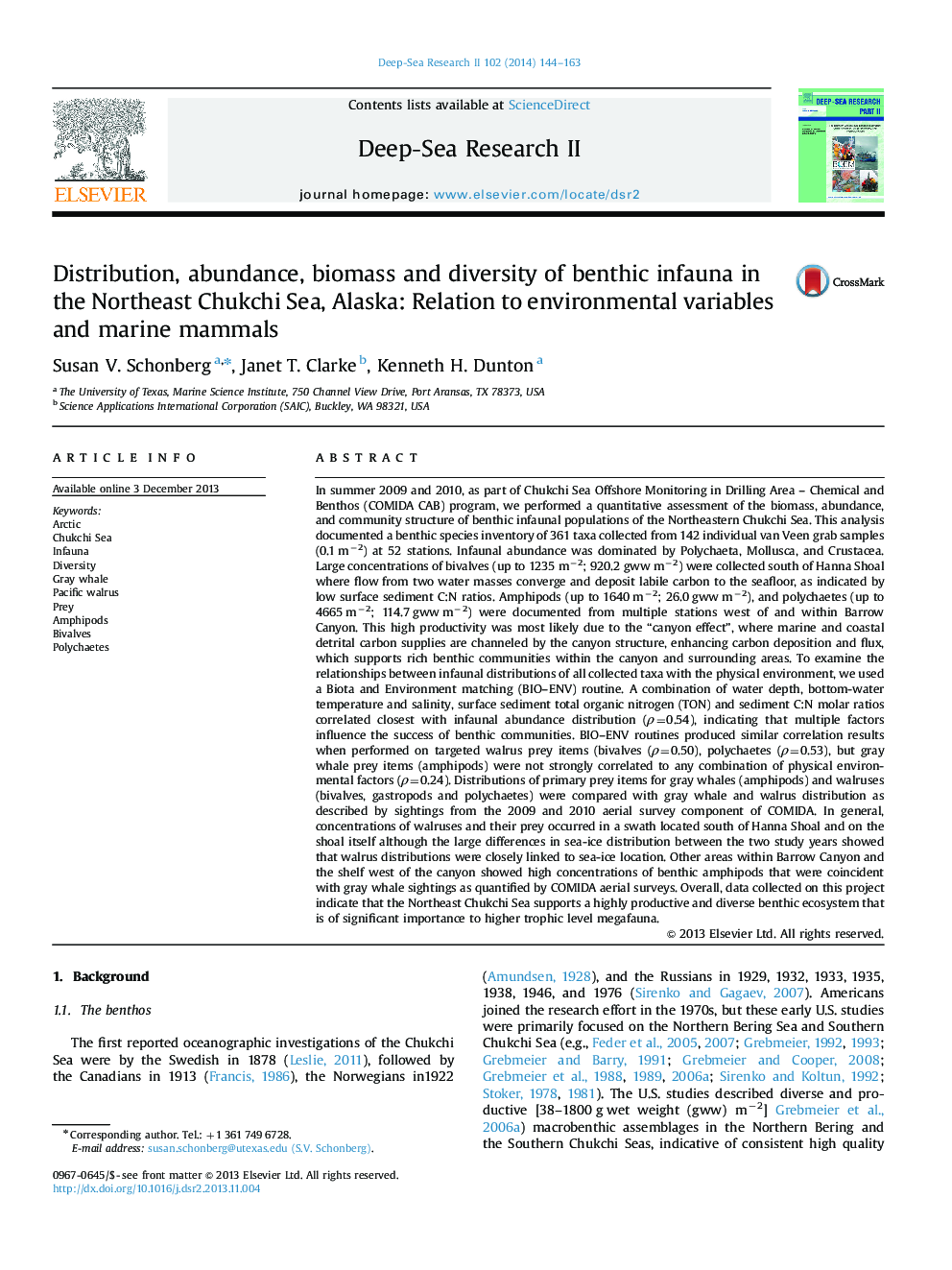| کد مقاله | کد نشریه | سال انتشار | مقاله انگلیسی | نسخه تمام متن |
|---|---|---|---|---|
| 4536420 | 1626438 | 2014 | 20 صفحه PDF | دانلود رایگان |
In summer 2009 and 2010, as part of Chukchi Sea Offshore Monitoring in Drilling Area – Chemical and Benthos (COMIDA CAB) program, we performed a quantitative assessment of the biomass, abundance, and community structure of benthic infaunal populations of the Northeastern Chukchi Sea. This analysis documented a benthic species inventory of 361 taxa collected from 142 individual van Veen grab samples (0.1 m−2) at 52 stations. Infaunal abundance was dominated by Polychaeta, Mollusca, and Crustacea. Large concentrations of bivalves (up to 1235 m−2; 920.2 gww m−2) were collected south of Hanna Shoal where flow from two water masses converge and deposit labile carbon to the seafloor, as indicated by low surface sediment C:N ratios. Amphipods (up to 1640 m−2; 26.0 gww m−2), and polychaetes (up to 4665 m−2; 114.7 gww m−2) were documented from multiple stations west of and within Barrow Canyon. This high productivity was most likely due to the “canyon effect”, where marine and coastal detrital carbon supplies are channeled by the canyon structure, enhancing carbon deposition and flux, which supports rich benthic communities within the canyon and surrounding areas. To examine the relationships between infaunal distributions of all collected taxa with the physical environment, we used a Biota and Environment matching (BIO–ENV) routine. A combination of water depth, bottom-water temperature and salinity, surface sediment total organic nitrogen (TON) and sediment C:N molar ratios correlated closest with infaunal abundance distribution (ρ=0.54), indicating that multiple factors influence the success of benthic communities. BIO–ENV routines produced similar correlation results when performed on targeted walrus prey items (bivalves (ρ=0.50), polychaetes (ρ=0.53), but gray whale prey items (amphipods) were not strongly correlated to any combination of physical environmental factors (ρ=0.24). Distributions of primary prey items for gray whales (amphipods) and walruses (bivalves, gastropods and polychaetes) were compared with gray whale and walrus distribution as described by sightings from the 2009 and 2010 aerial survey component of COMIDA. In general, concentrations of walruses and their prey occurred in a swath located south of Hanna Shoal and on the shoal itself although the large differences in sea-ice distribution between the two study years showed that walrus distributions were closely linked to sea-ice location. Other areas within Barrow Canyon and the shelf west of the canyon showed high concentrations of benthic amphipods that were coincident with gray whale sightings as quantified by COMIDA aerial surveys. Overall, data collected on this project indicate that the Northeast Chukchi Sea supports a highly productive and diverse benthic ecosystem that is of significant importance to higher trophic level megafauna.
Journal: Deep Sea Research Part II: Topical Studies in Oceanography - Volume 102, April 2014, Pages 144–163
